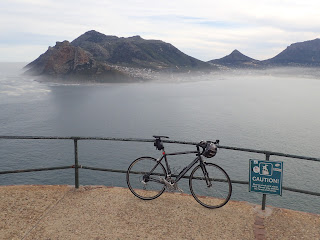Catching a train along the Long Island Railroad on a sunny Sunday morning, we alighted at Speonk station, which serves the locality of Remsenburg.
It was in Remsenburg that our favourite author, PG Wodehouse, had spent his final years, and we wanted to pay tribute to him with a little pilgrimage while we were in the vicinity.
Visiting Wodehouse-related sites as I travel had become something of a hobby. In 2011 I visited the prison in Poland where he had been interned in World War Two; and earlier in 2014 I'd had a drink at the Berlin hotel where he was subsequently quartered. In 2012 I had joined a group of PG Wodehouse Society members on a memorable weekend excursion to Norfolk, UK, visiting places connected with his life and work.
I didn't know what to expect when we arrived at Remsenburg, and was pleasantly surprised to find a cafe in operation next to the train station:
The interior was decked out with reminders of its railway past:
When we mentioned our quest to our waitress, she pointed to a section of wall - and we were delighted to discover a framed photograph of Wodehouse (top right), strolling to the local post office to send a manuscript to his publisher:
It was heartening to see that PGW's local fame had not entirely subsided, some four decades after his death.
We walked to the Remsenburg Community Presbyterian Church, an attractive white wooden structure with a modest spire. It was a pleasant 20 minute stroll on a sunny day, along Phillips Avenue to its intersection with Country Road.
Though it was a residential area, there were plenty of trees along the walk, giving the area a serene, semi-rural feel. I could see why Wodehouse had chosen this place as a retreat late in life, after the scarring experience of his imprisonment and manipulation by the German military in World War Two.
As we crossed to the church a pair of cyclists paused courteously to let us pass, then we stopped at the front of the building to examine a large commemorative sign:
Detailing his life and work, it ended with the words "His gentle humour and superb mastery of the English language continue to bring joy to readers all over the world."
In the graveyard behind the church, we found his final resting place:
And on top, to one side, a small figure placed there by a fan, suggesting the Infant Samuel at Prayer. Plaster figures of Samuel are mentioned several times in Wodehouse's short stories and novels, often in an amusing light at odds with their apparent piety.
In my favourite Jeeves and Wooster novel, The Code of the Woosters, Bertie Wooster's Aunt Dahlia uses a figure of Samuel to relieve her anxiety about the possible loss of her superb chef, Anatole:
She rose, and moved restlessly to the mantelpiece. I could see that she was looking for something to break as a relief to her surging emotions – what Jeeves would have called a palliative – and courteously drew her attention to a terra cotta figure of the Infant Samuel at Prayer. She thanked me briefly, and hurled it against the opposite wall.So it was good to see an approximation of Samuel here, unsmashed and working away at the old stand (as Wodehouse would have put it):
At an initial loss of how to mark the occasion, Narrelle and I decided to read aloud a few of our favourite Wodehousean extracts (thank heaven for the Kindle app on our phones!).
So I read out part of the short story in which Bertie first hires Jeeves, then Narrelle read the funny poem A Pastoral; I continued with part of a Jeeves short story set in New York City; and Narrelle concluded with the amusing poem Good Gnu.
It was fun, and moving, and made us shed a few tears as well.
After a while we started walking back to the station, and met one of the cyclists who'd let us cross earlier. It turned out he was originally from Perth, which surprised me not at all - you find random Australians everywhere around the world, in the seemingly most unlikely places.
Living in the area, he was curious about our mission, and why so many people made the trek out to Long Island to visit Wodehouse's grave. I could tell he was unfamiliar with PGW's work, so I mumbled a few words about enjoying his books and we pushed on.
Looking back, however, I wished I'd expressed myself more fully. All I needed to do was to borrow three words inscribed at the base of his gravestone: "He gave joy."



















